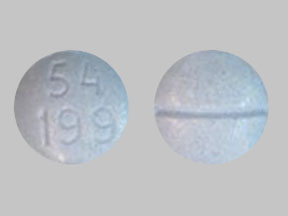Roxicodone Solution Dosage
Generic name: oxycodone hydrochloride 5mg in 5mL
Dosage form: oral solution
Drug class: Opioids (narcotic analgesics)
Medically reviewed by Drugs.com. Last updated on Aug 7, 2023.
ROXICODONE® is intended for the management of moderate to severe pain in patients who require treatment with an oral opioid analgesic. The dose should be individually adjusted according to severity of pain, patient response and patient size. If the pain increases in severity, if analgesia is not adequate, or if tolerance occurs, a gradual increase in dosage may be required.
Patients who have not been receiving opioid analgesics should be started on ROXICODONE® in a dosing range of 5 to 15 mg every 4 to 6 hours as needed for pain. The dose should be titrated based upon the individual patient's response to their initial dose of ROXICODONE®. Patients with chronic pain should have their dosage given on an around-the-clock basis to prevent the reoccurrence of pain rather than treating the pain after it has occurred. This dose can then be adjusted to an acceptable level of analgesia taking into account side effects experienced by the patient.
For control of severe chronic pain, ROXICODONE® should be administered on a regularly scheduled basis, every 4-6 hours, at the lowest dosage level that will achieve adequate analgesia.
As with any potent opioid, it is critical to adjust the dosing regimen for each patient individually, taking into account the patient's prior analgesic treatment experience. Although it is not possible to list every condition that is important to the selection of the initial dose of ROXICODONE®, attention should be given to: 1) the daily dose, potency, and characteristics of a pure agonist or mixed agonist/antagonist the patient has been taking previously, 2) the reliability of the relative potency estimate to calculate the dose of oxycodone needed, 3) the degree of opioid tolerance, 4) the general condition and medical status of the patient, and 5) the balance between pain control and adverse experiences.
Conversion from Fixed-Ratio Opioid/Acetaminophen, Opioid/Aspirin, or Opioid/Nonsteroidal Combination Drugs:
When converting patients from fixed ratio opioid/non-opioid drug regimens a decision should be made whether or not to continue the non-opioid analgesic. If a decision is made to discontinue the use of non-opioid analgesic, it may be necessary to titrate the dose of ROXICODONE® in response to the level of analgesia and adverse effects afforded by the dosing regimen. If the non-opioid regimen is continued as a separate single entity agent, the starting dose ROXICODONE® should be based upon the most recent dose of opioid as a baseline for further titration of oxycodone. Incremental increases should be gauged according to side effects to an acceptable level of analgesia.
Patients Currently on Opioid Therapy:
If a patient has been receiving opioid-containing medications prior to taking ROXICODONE®, the potency of the prior opioid relative to oxycodone should be factored into the selection of the total daily dose (TDD) of oxycodone.
In converting patients from other opioids to ROXICODONE® close observation and adjustment of dosage based upon the patient's response to ROXICODONE® is imperative. Administration of supplemental analgesia for breakthrough or incident pain and titration of the total daily dose of ROXICODONE® may be necessary, especially in patients who have disease states that are changing rapidly.
Maintenance of Therapy:
Continual re-evaluation of the patient receiving ROXICODONE® is important, with special attention to the maintenance of pain control and the relative incidence of side effects associated with therapy. If the level of pain increases, effort should be made to identify the source of increased pain, while adjusting the dose as described above to decrease the level of pain.
During chronic therapy, especially for non-cancer-related pain (or pain associated with other terminal illnesses), the continued need for the use of opioid analgesics should be re-assessed as appropriate.
Cessation of Therapy:
When a patient no longer requires therapy with ROXICODONE® or other opioid analgesics for the treatment of their pain, it is important that therapy be gradually discontinued over time to prevent the development of an opioid abstinence syndrome (narcotic withdrawal). In general, therapy can be decreased by 25% to 50% per day with careful monitoring for signs and symptoms of withdrawal (see DRUG ABUSE AND DEPENDENCE section for description of the signs and symptoms of withdrawal). If the patient develops these signs or symptoms, the dose should be raised to the previous level and titrated down more slowly, either by increasing the interval between decreases, decreasing the amount of change in dose, or both. It is not known at what dose of ROXICODONE® that treatment may be discontinued without risk of the opioid abstinence syndrome.
Frequently asked questions
- Which drugs cause opioid-induced constipation?
- How long does oxycodone stay in your system?
- How long does opioid withdrawal last?
- Oxycodone vs Hydrocodone - How do they compare?
- How long does oxycodone take to work?
- Oxycodone vs OxyContin - What's the difference?
- Which painkiller should you use?
- What are the withdrawal symptoms of oxycodone?
More about Roxicodone (oxycodone)
- Check interactions
- Compare alternatives
- Pricing & coupons
- Reviews (69)
- Drug images
- Latest FDA alerts (3)
- Side effects
- Dosage information
- During pregnancy
- Generic availability
- Support group
- Drug class: Opioids (narcotic analgesics)
- Breastfeeding
- En español
Patient resources
- Roxicodone drug information
- Roxicodone (Oxycodone Capsules and Tablets)
- Roxicodone (Oxycodone Concentrate)
- Roxicodone (Oxycodone Solution)
Other brands
OxyContin, Xtampza ER, Oxaydo, ETH-Oxydose, ... +7 more
Professional resources
Other brands
OxyContin, Xtampza ER, Oxaydo, RoxyBond
Related treatment guides
Further information
Always consult your healthcare provider to ensure the information displayed on this page applies to your personal circumstances.

